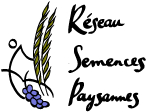Niveau juridique : Union européenne
Texte de la question :
« Spain accounts for 55% of global olive oil production. My region, Andalucía, is home to 80% of Spain’s production and the industry plays a vital role in rural areas’ household income. Spanish olive growers are currently fighting various diseases, with the biggest threats to olive trees being Xylella fastidiosa and Verticillium wilt.
1. What are the repercussions of both diseases on the European olive industry and how prevalent are they?
2. What measures are being taken to detect, prevent and treat Xylella fastidiosa and Verticillium wilt? »
Réponse donnée par Ms Kyriakides au nom de la Commission le 8 juillet 2022 :
« 1. The Joint Research Centre estimates Xylella fastidiosa full spread could cost the Union over EUR 5.5 billion per year due to loss of production, with potential export losses of EUR 0.7 billion per year. In case Xylella fastidiosa fully spreads across the Union, it could affect over 70% of the Union’s production value of olive trees older than 30 years, and 35% of the younger trees (1). The European Food Safety Authority (EFSA) ‘Scientific opinion on the pest categorisation of Verticillium dahliae Kleb.’ cites yield falls up to 50% or more for olive orchards in affected areas (2).
2. Xylella fastidiosa is regulated as a Union quarantine pest under the EU plant-health Regulation (3). The Commission adopted measures against its spread in an Implementing Regulation (4) thereby repealing the former Commission Implementing Decision (5). Spain has received EU co-financing support for the expenditure directly related to survey programmes, eradication and containment measures to fight Xylella fastidiosa under Regulation 652/2014 (6) and the Single Market Program Regulation (7). According to EFSA so far, no cure for plants in the field is available. Results from the Research and Innovation Programme Horizon 2020 (8), projects POnTE (9) and XF- ACTORS (10) contributed with a better knowledge on the pest (11), to managing it and preventing greater economic losses. Verticillium dahliae is listed as a Union regulated non-quarantine pest in EU plant-health Implementing Regulation (12). Measures and requirements are in place in the Union to prevent the presence of the pest on plant propagating material under Commission Implementing Directive 2014/98/EU (13).
The current Research and Innovation Programme Horizon Europe (14) will continue funding research and innovation to protect crops from pests. »
(1) Sánchez, B; Barreiro-Hurle, J; Soto Embodas, I; Rodriguez-Cerezo, E, The Impact Indicator for Priority Pests (I2P2): a tool for ranking pests according to Regulation (EU) No 2016/2031, EUR 29793 EN, Publications Office of the European Union, Luxembourg, 2019, ISBN 978-92-76-08785-4, doi:10.2760/585182, JRC116973. joint-research-centre.ec.europa.eu/jrc-news/monitoring-impacts-xylella-fastidiosa-2019-11-12_en
(2) efsa.onlinelibrary.wiley.com/doi/epdf/10.2903/j.efsa.2014.3928
(3) Regulation (EU) 2016/2031 of the European Parliament of the Council of 26 October 2016 on protective measures against pests of plants (OJ L 317, 23.11.2016, p. 4–104).
(4) Commission Implementing Regulation (EU) 2020/1201 of 14 August 2020 as regards measures to prevent the introduction into and the spread within the Union of Xylella fastidiosa (Wells et al.) (OJ L 269, 17.8.2020, p. 2–39).
(5) Commission Implementing Decision (EU) 2015/789 of 18 May 2015 as regards measures to prevent the introduction into and the spread within the Union of Xylella fastidiosa (Wells et al.) (OJ L 125, 21.5.2015).
(6) Regulation (EU) No 652/2014 of the European Parliament and of the Council of 15 May 2014 laying down provisions for the management of expenditure relating to the food chain, animal health and animal welfare, and relating to plant health and plant reproductive material (OJ L 189, 27.6.2014).
(7) Regulation (EU) 2021/690 of the European Parliament and of the Council of 28 April 2021 establishing a programme for the internal market, competitiveness of enterprises, including small and medium-sized enterprises, the area of plants, animals, food and feed, and European statistics (Single Market Programme) (OJ L 153, 3.5.2021, p. 1–47).
(9) cordis.europa.eu/project/id/635646
(10) cordis.europa.eu/project/id/727987
(11) www.xfactorsproject.eu/press_review/research-outcomes-xylella-xf-actors-ponte-projects/
(12) Commission Implementing Regulation (EU) 2019/2072 of 28 November 2019 establishing uniform conditions for the implementation of Regulation (EU) 2016/2031 of the European Parliament and the Council, as regards protective measures against pests of plants (OJ L 319, 10.12.2019, p. 1–279).
Lien vers la page de la question ICI
